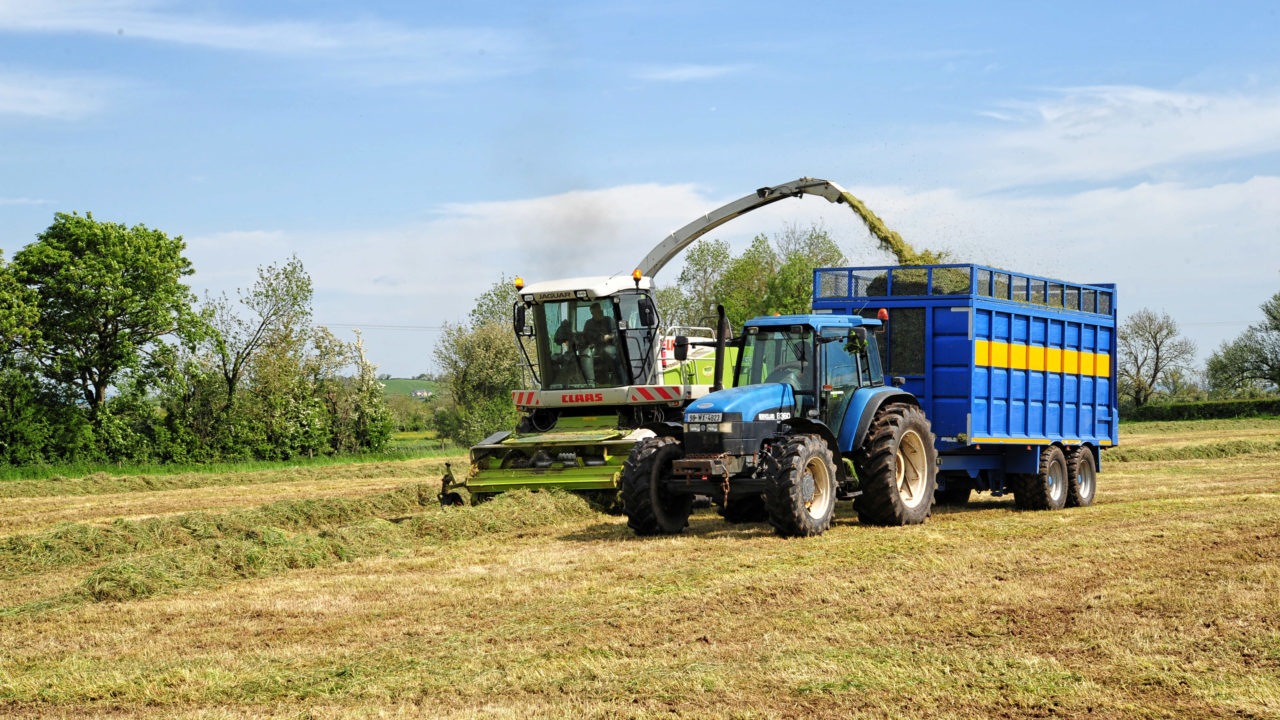A debate that takes place among farmers around this time of the year is the topic of making pit silage, or round-bale silage.
Both options have their benefits and different farmers have preferences for one or the other, depending on their system.
Farmers that regularly take out small areas of grass typically choose to make bales, while farmers who deal with larger areas at the one time typically go for a pit.
However, this year more than ever, due to the continuously rising cost of inputs, a consideration for many will, and should be: Which is the cheaper option?
Pit vs. round-bale silage
This week, Agriland contacted a number of pit and round-bale silage contractors across the country to see what they would be charging for silage this year.
What we found was that there was a significant variation between quotes.
A number of contractors contacted Agriland expressing their frustration with the low rates being charged by some contractors, saying that with fuel and input costs soaring, these low prices would be unfeasible to operate at.
For the purpose of this article, the lower quotes for round bales and pit silage will not be used.
In this instance, the comparison will be used of a pit-silage contractor charging €170/ac (VAT inclusive) and a round-bale silage contractor charging €20/bale (VAT inclusive).
The pit price of €170/ac includes cutting, raking, lifting and drawing in; the round-bale price of €20/bale includes cutting, raking, baling and wrapping (with plastic costs included) but not drawing in the bales.
Cost comparison of pit silage at €170/ac and round-bale silage at €20/bale (excluding drawing in bales):
Cost/ac Five bales/ac Six bales/ac Seven bales/ac Eight bales/ac Nine bales/ac Pit silage €170 €170 €170 €170 €170 Round-bale silage €100/ac €120/ac €140/ac €160/ac €180/ac
Land and fertiliser costs are not counted in this instance and the cost of drawing in the bales is not accounted for either.
Also of note is that a silage pit may also have to be rolled further by the farmer to remove all air, and a plastic cover will have to be bought by the farmer to cover the pit.
Also, covering the silage pit with sandbags and, in most cases, tyres, is a labour cost that must be accounted for.
Heavy 600-gauge 60x120ft plastic silage-pit covers have been quoted at €320 this year – up €100 from last year’s prices – and the lighter 400-gauge covers have been quoted at €210 up €50 from last year. These additional costs must also be factored in to pit silage also.
Conclusion
As the table above indicates, at the above rates, where lighter crops of silage are cut (eight bales/ac or less) and the farmer is willing to draw-in the bales themselves, bales may be more cost-effective than making pit-silage.
However, where heavy cuts of silage are being taken, the dynamic changes.
This year more than ever, farmers should take into account all their costs and identify their most cost-effective options.
It is also worth reminding farmers that the Minister for Agriculture, Food and the Marine, Charlie McConalogue, recently announced a scheme for beef and sheep farmers that will reward them with a €100/ha payment for all silage cut up to a maximum of 10ha.
This will result in individual farmers being eligible to receive up to a maximum of €1,000.
As mentioned already, there are a number of different variables in contractor costs and the above is just a sample scenario.
It is also important to point out that the above prices are merely the findings from a sample of silage contractors (and silage-cover merchants) across the country contacted by Agriland ,and some may be charging less, while others may be charging more.
